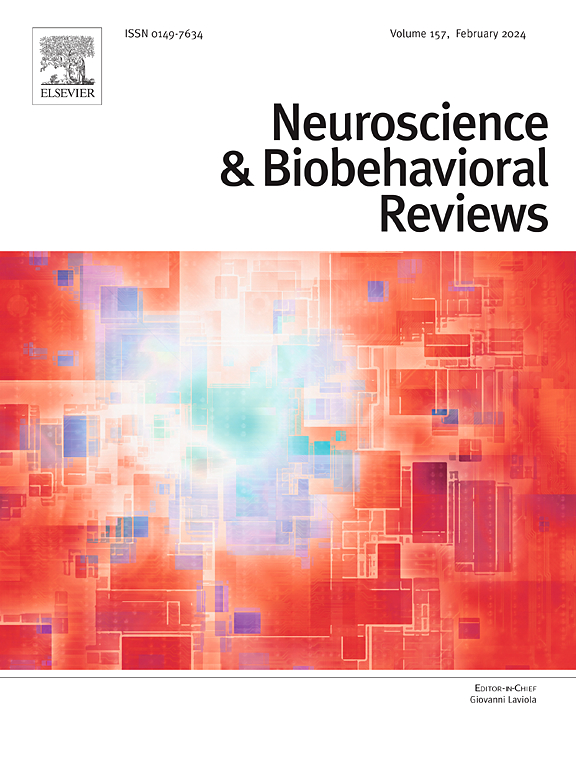功能性神经障碍中运动功能障碍的机制:述评
IF 7.9
1区 医学
Q1 BEHAVIORAL SCIENCES
引用次数: 0
摘要
功能性神经障碍(FND)的特征之一是运动症状,如虚弱和震颤。虽然这些症状既常见又致残,但它们是如何在机制层面上产生的尚不清楚。这篇综述通过整合神经影像学、生理学、遗传学、脑刺激和行为研究的发现,提供了FND中运动功能障碍的最新基础。在MEDLINE和PsycINFO进行了系统的文献检索,得到168项研究符合我们的纳入标准。结果普遍表明,与健康对照组相比,患者在预测自己的行为和检测自己的身体线索方面存在困难,限制了他们的行为推理能力。文献还显示,与健康对照组相比,患者往往对压力过于敏感,伴随着他们的情绪和运动系统之间的联系增强。同样明显的是,与对照组相比,患者表现出扭曲的行为选择和过度的自我监控,这意味着自上而下的控制异常。我们讨论这些异常的信息处理模式如何与FND患者所经历的特定运动症状相关,从而提供一个可能促进这些症状治疗的框架。本文章由计算机程序翻译,如有差异,请以英文原文为准。
Mechanisms of motor dysfunction in functional neurological disorder: A narrative review
One of the characteristic presentations of functional neurological disorder (FND) is with motor symptoms, such as weakness and tremor. While these symptoms are both common and disabling, how they arise at a mechanistic level remains unclear. This review provides an up-to-date account of the underpinnings of motor dysfunction in FND by integrating findings from neuroimaging, physiology, genetic, brain stimulation, and behavioral studies. A literature search was conducted systematically in MEDLINE and PsycINFO, resulting in 168 studies that met our inclusion criteria. Results generally suggest that patients, compared to healthy controls, have difficulties in predicting their own actions and detecting their bodily cues, limiting their capability for action inference. The literature also shows that patients tend to be hypersensitive to stress, accompanied by heightened linkage between their emotion and motor systems, when compared to healthy controls. It is also evident that, relative to controls, patients exhibit distorted action selection and excessive self-monitoring, implying abnormalities in top-down control. We discuss how these abnormal information processing patterns relate to specific motor symptoms experienced by patients with FND, thereby offering a framework that may facilitate the treatment of these symptoms.
求助全文
通过发布文献求助,成功后即可免费获取论文全文。
去求助
来源期刊
CiteScore
14.20
自引率
3.70%
发文量
466
审稿时长
6 months
期刊介绍:
The official journal of the International Behavioral Neuroscience Society publishes original and significant review articles that explore the intersection between neuroscience and the study of psychological processes and behavior. The journal also welcomes articles that primarily focus on psychological processes and behavior, as long as they have relevance to one or more areas of neuroscience.

 求助内容:
求助内容: 应助结果提醒方式:
应助结果提醒方式:


